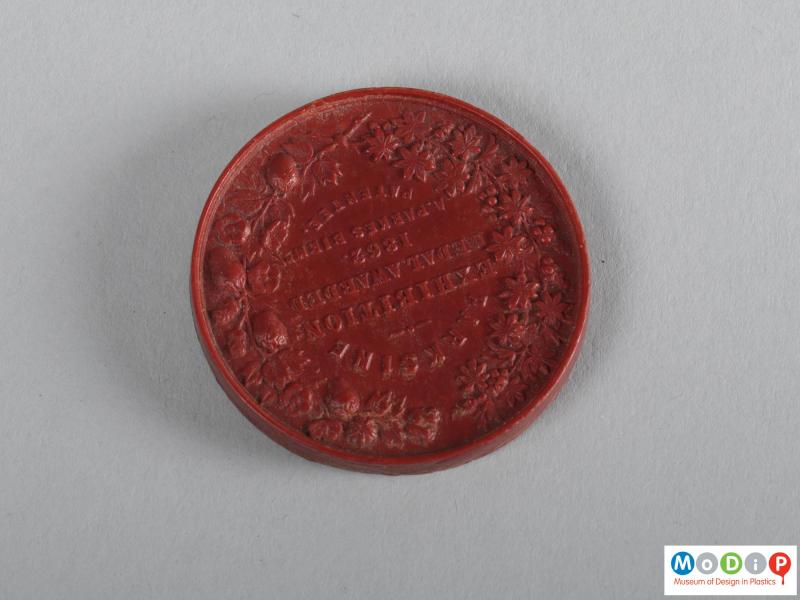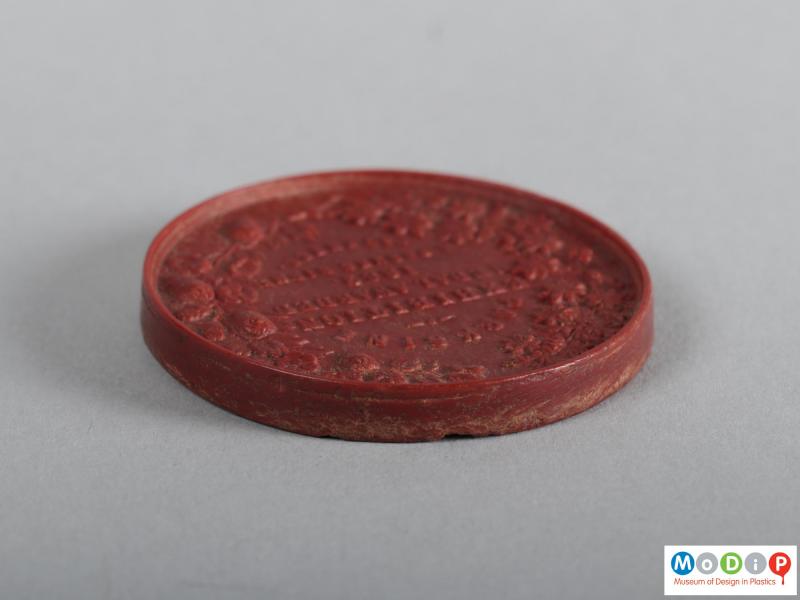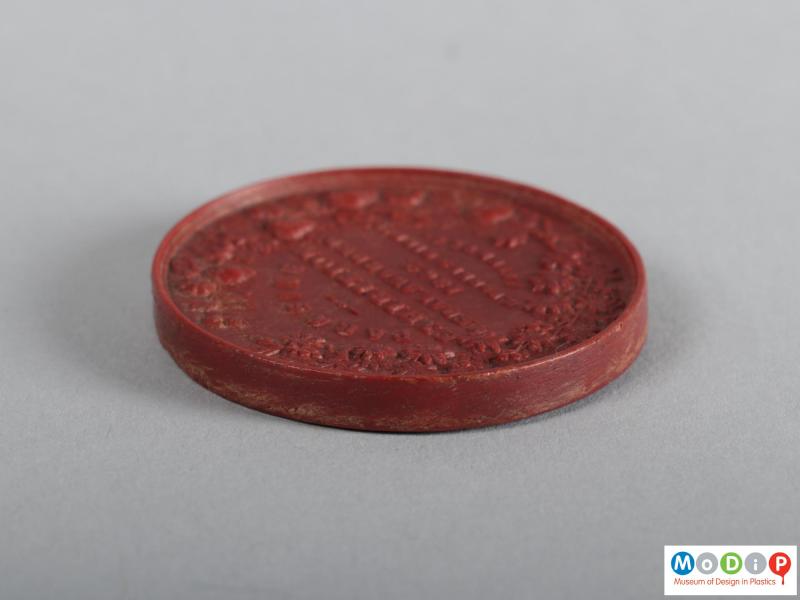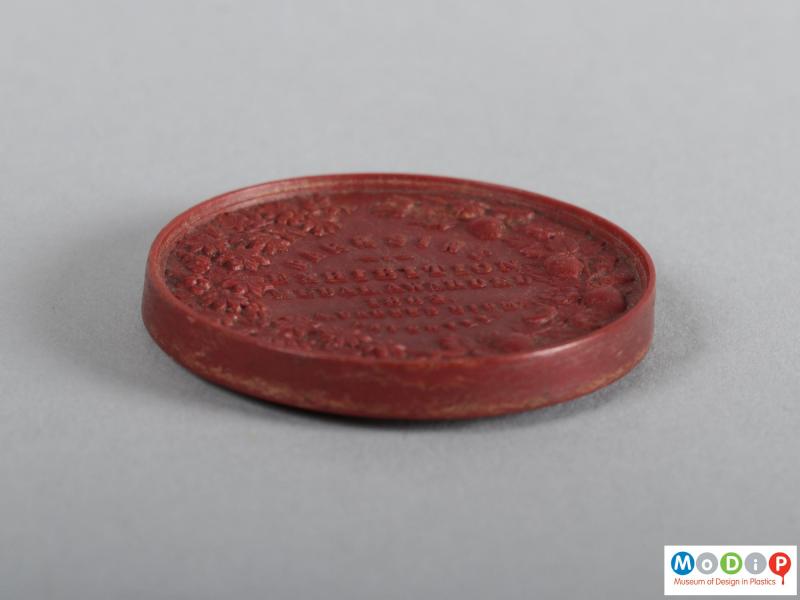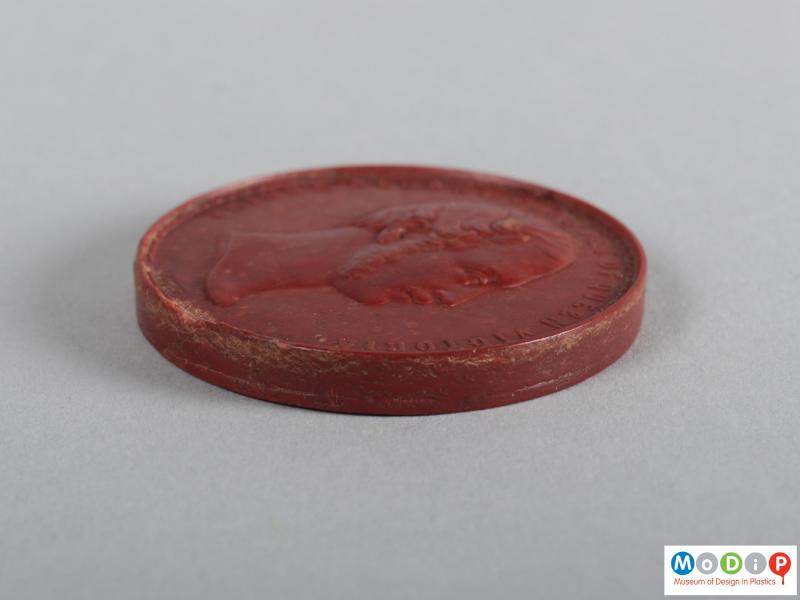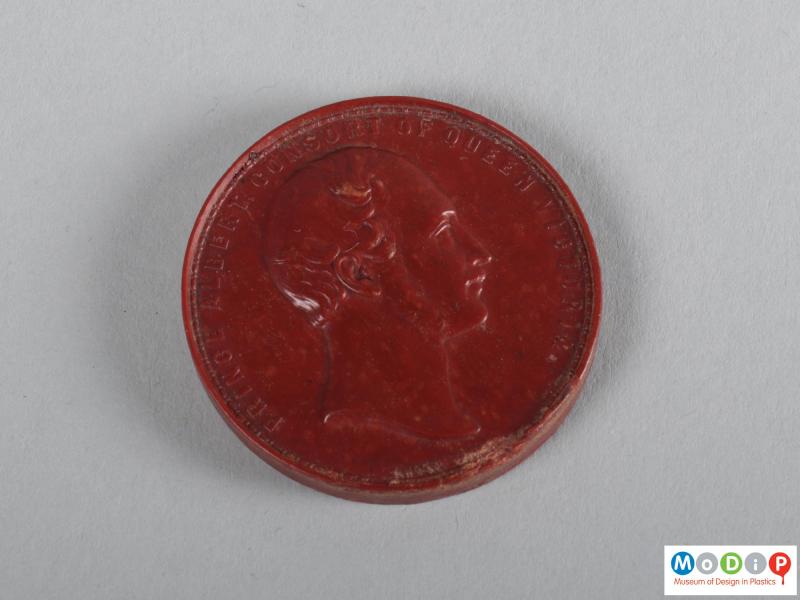Classification
Description
A single colour replica of an 1862 exhibition medal, with the profile of Prince Albert on one side, made of compression moulded Parkesine (cellulose nitrate). Parkesine is the tradename for the first man-made plastic, which was invented by Alexander Parkes in 1862. The medal is thought to be an interpretation of the medals awarded to exhibitors at the world fair held in South Kensington, now the location of the South Kensington museums. The medal has the portrait of Prince Albert, the consort of Queen Victoria on one side and on the reverse it has the inscription 'PARKESINE. EXHIBITION MEDAL AWARDED 1862. A. PARKES BIRM. PATENTEE' The inscription is surronded by a wreath of vines on the left and strawberry plant on the right side. This example is made in a single terracotta colour.
Inscriptions
moulded: "Prince Albert Consort of Queen Victoria" (front)
moulded: "Parkesine Exhibition Medal Awarded 1862. A. Parkes Birm. Patentee" (rear)
Object number
AIBDC : 006561SA
Date
1862 - 1868 (circa)
Country
Method
Dimensions
Depth
3mm
Diameter
42mm

